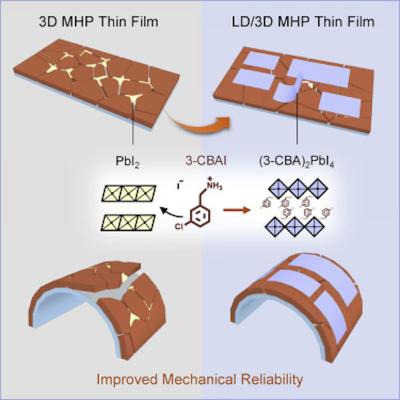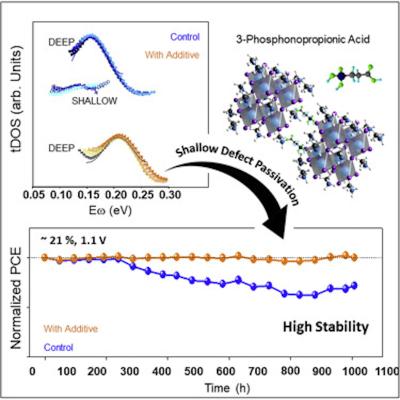![]() EPFL is a Switzerland-based technical university and research center. EPFL is focuses on three missions: teaching, research and technology transfer. EPFL works together with an extensive network of partners including other universities and institutes of technology, secondary schools and colleges, industry and economy, political circles and the general public.
EPFL is a Switzerland-based technical university and research center. EPFL is focuses on three missions: teaching, research and technology transfer. EPFL works together with an extensive network of partners including other universities and institutes of technology, secondary schools and colleges, industry and economy, political circles and the general public.
EPFL does extensive perovskite R&D work and is responsible for many publications and advancements in the field.
Route Cantonale
1015 Lausanne
Switzerland
The latest EPFL perovskite news:
New interface engineering approach could improve perovskite solar cells' efficiency and stability
Scientists from Ãcole Polytechnique Fedérale de Lausanne (EPFL), University of Luxembourg, Empa-Swiss Federal Laboratories for Materials Science and Technology and CNRS have demonstrated a simple approach to designing the interface between two layers in a perovskite solar cell, improving both the performance and stability of the device.
Solar cells fabricated by the group achieved 23.4% conversion efficiency, and were operated for close to 6,000 hours before degrading beyond 80% of this initial value.
Perovskites enable simple and cheap neutron detector
Scientists at EPFL and their collaborators have developed a simple and low-cost perovskite-based device that detects neutrons. The perovskite materials used in the study are based on lead and bromine. Both contain single crystals of a compound called methylammonium lead tri-bromide.
The team first placed these crystals in the path of a neutron source. The neutrons, hitting the crystals, penetrate the nucleus of the atoms within the crystal, exciting them into a higher energy state. When they relax and decay, gamma rays are created. These gamma photons charge the perovskite, delivering a tiny current that can be estimated.
EPFL team addresses the lead issue of perovskite solar cells
A team of scientists at EPFL has come up with an efficient solution to the lead problem of perovskite solar cells, which involves using a transparent phosphate salt that does not block solar light and hence doesn't affect performance.
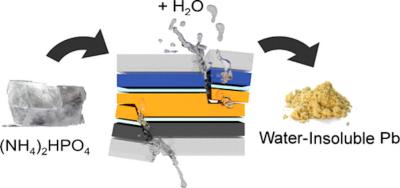
In case the solar panel fails, the phosphate salt immediately reacts with lead to produce a water-insoluble compound that cannot leach out to the soil, and which can be recycled.
New approach uses crown ethers to improve perovskite solar cell stability
Researchers from EPFL, Universität Tübingen and University of Fribourg, led by Professor Michael Grätzel at EPFL's School of Basic Sciences, used a novel method with multimodal host-guest complexation to significantly improve the stability of perovskite solar cells while also reducing the release of lead into the environment. The strategy involves using a member of the crown ethers, a family of cyclic compounds whose ring-like atomic structure resembles a crown.
The researchers used the dibenzo-21-crown-7 in the fabrication of formamidinium lead iodide perovskite solar cells. They demonstrated the efficiency of this synergistic approach with cesium metal ions, for which the crown ether shows a strong affinity. Acting as a vehicle, the crown ether assembles at the perovskite film's interface and delivers the cesium ions into its interior.
Researchers use special capping layer to achieve flexible solar cells with improved efficiency, stability and reliability
An international team of researchers, including ones from Brown University, EPFL, Dalian University of Technology and Shaanxi Normal University, has developed a flexible thin-film perovskite solar cell with an efficiency of 21.0%.
The perovskite layer for the cell, which has an “n-i-p†layout, was fabricated using a metal-halide capping layer placed on top of a three-dimensional metal-halide perovskite film. This design reportedly provides hermetically sealed encapsulation, which is traditionally difficult to achieve in flexible perovskite cells, and also enhances the photocarrier properties at the interface between the perovskite film and the hole transport layer (HTL).
Researchers quantify photoinduced polaronic distortions in inorganic lead halide perovskite nanocrystals
Understanding the charge mobility of lead-halide perovskite materials is crucial for their use in photovoltaic applications. Using X-ray spectroscopic techniques, the structural deformations affecting the charge mobility, which plays a central role in solar energy conversion, have been identified and quantified by an international team of scientists led by Giulia Mancini (at the University of Pavia) and M. Chergui at EPFL.
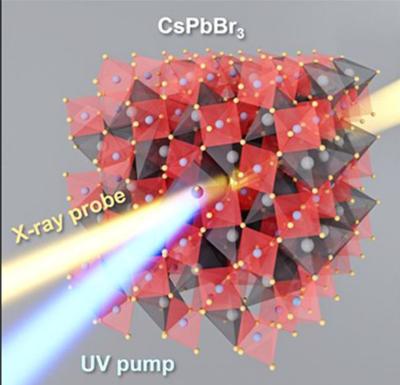
Lead-halide perovskites' use in photovoltaic applications relies on the generation of charges (electrons and hole) upon absorption of light. These charges migrate through the material to generate an electrical current. One of the crucial physical properties in this respect is the so-called charge mobility. Despite their remarkable performances in light-to-electricity conversion, a limitation of perovskites is their charge mobilities, which are orders of magnitude smaller than those of conventional semi-conductors used in photovoltaics.
Researchers use H3pp additive to improve device stability and gain better understanding of the impact of defects in PSCs
An international team of scientists from ICN2, EPFL, Eindhoven University of Technology, University of Cambridge, Max-Planck Institute for polymer Research and several other institutions have fabricated perovskite solar cells which retained almost all of their initial 21% efficiency after 1,000 hours under continuous operation at their maximum power point.
The researchers attribute this performance to an additive that ‘blocked’ ions that cause device degradation, 3-phosphono propionic acid (H3pp), which served to greatly improve device stability with no observable effects on its solar performance. The team hopes this new work will contribute to an improved understanding of the relationship between efficiency and stability in perovskite PV.
Researchers reach 25.6% conversion efficiency using a novel anion engineering concept
A team of researchers, led by South Korea's UNIST and KIER, and Switzerland's EPFL, has reached 25.6% power conversion efficiency of perovskite solar cells by introducing an anion engineering concept that uses pseudo-halide anion formate to suppress anion-vacancy defects and augment crystallinity.
Perovskite derivatives have been investigated to overcome instability issues with lead-based organic perovskite materials in ambient air and reduce the use of lead. Researchers have introduced various methods to improve conversion efficiency. An engineering concept using formate, which is the anion derived from formic acid, was introduced by researchers.
Researchers design novel X-ray photodetectors based on perovskites on top of graphene
A team of scientists, led by László Forró from the School of Basic Sciences at the Ecole Polytechnique Federale de Lausanne (EPFL) in Switzerland, has developed a new X-Ray Photodetector based on perovskites and graphene.
Using 3D aerosol jet-printing technology, the team designed a new technique for creating highly efficient x-ray photodetectors that can be easily added to standard microelectronic circuits, creating more powerful medical imaging devices that can deliver better scan qualities.
EPFL team develops perovskite material that can detect gamma rays
Researchers at Ecole Polytechnique Fédérale de Lausanne (EPFL), assisted by teams at Croatia's University of Split, have developed a perovskite that can detect gamma rays.
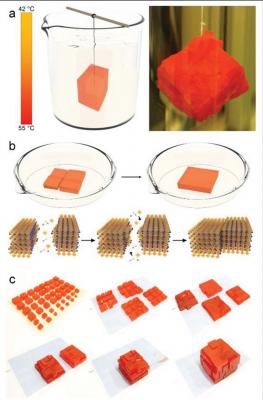 The 'oriented crystal'crystal growth' (OC2G) method of large MAPbBr3 crystals . a) Growing of large crystals by the suspended seed crystal; b,c) The consecutive steps of fusing together individual single crystals into a large crystal. Image by EPFL
The 'oriented crystal'crystal growth' (OC2G) method of large MAPbBr3 crystals . a) Growing of large crystals by the suspended seed crystal; b,c) The consecutive steps of fusing together individual single crystals into a large crystal. Image by EPFL
"This photovoltaic perovskite crystal, grown in this kilogram size, is a game changer," says EPFL's Professors Lászlo Forró. "You can slice it into wafers, like silicon, for optoelectronic applications, and, in this paper, we demonstrate its utility in gamma-ray detection."
Pagination
- Previous page
- Page 4
- Next page
